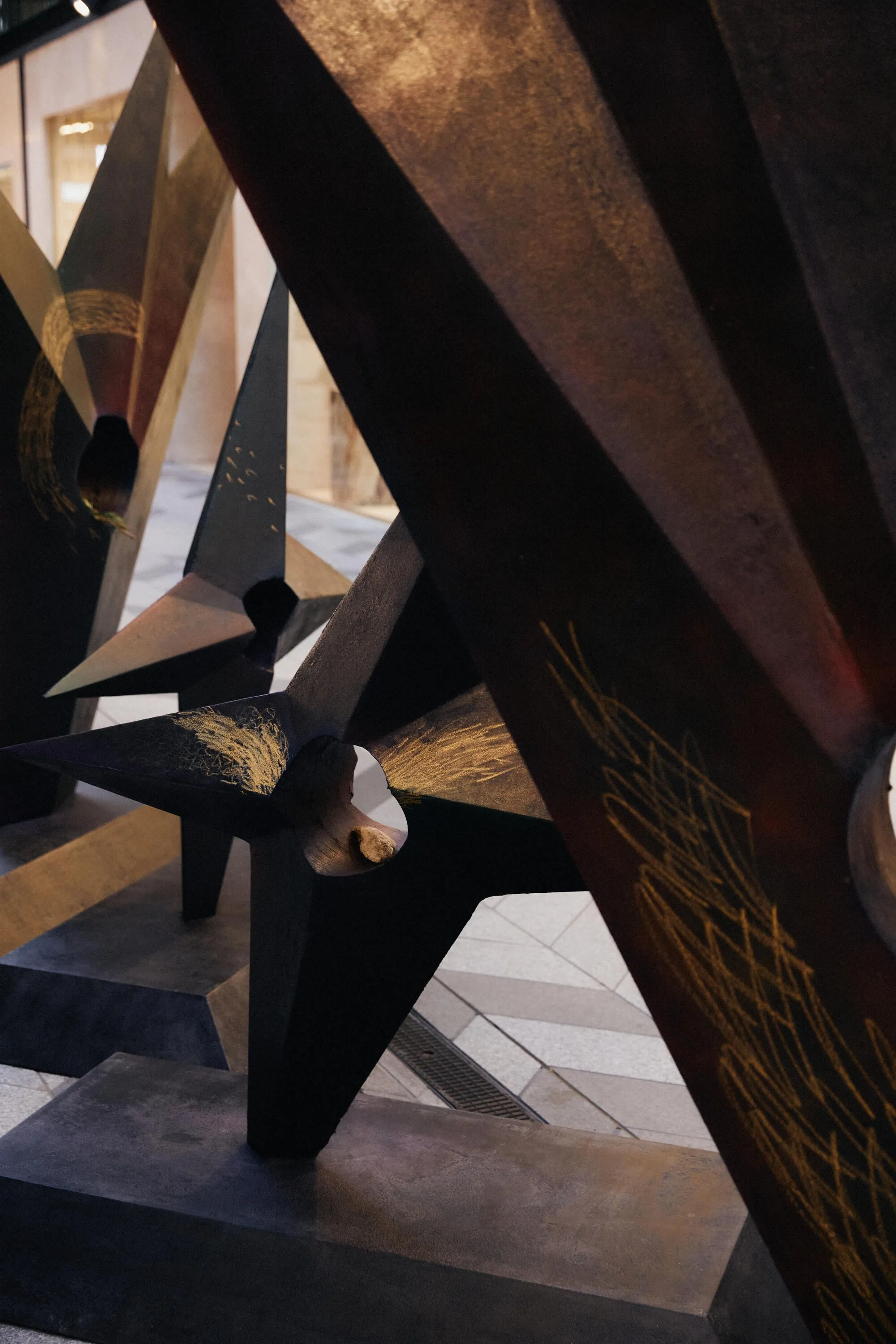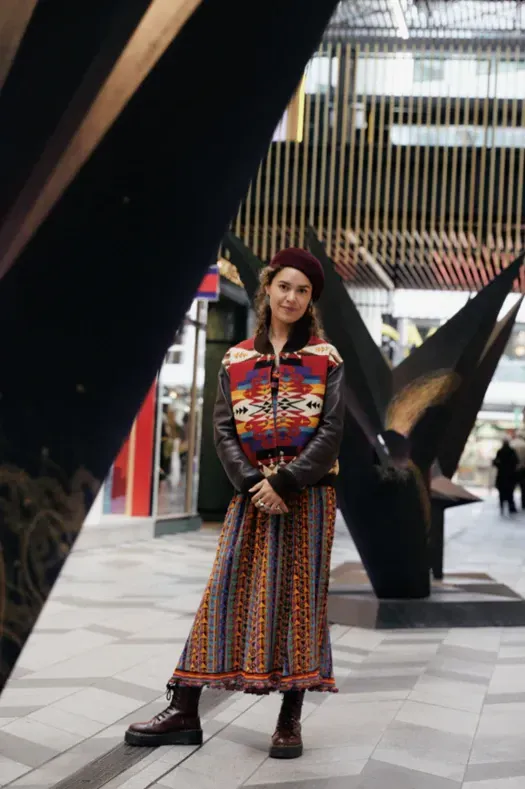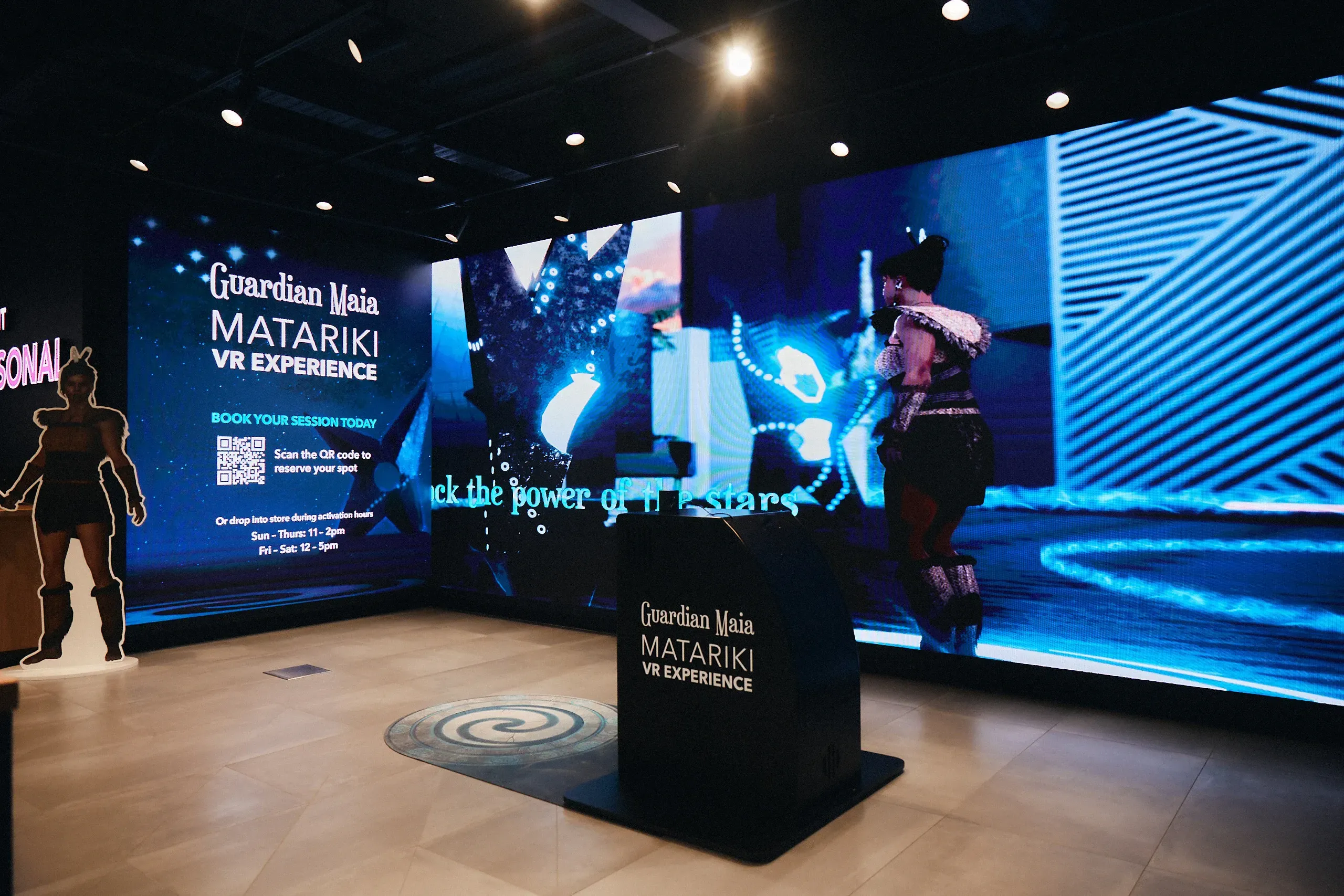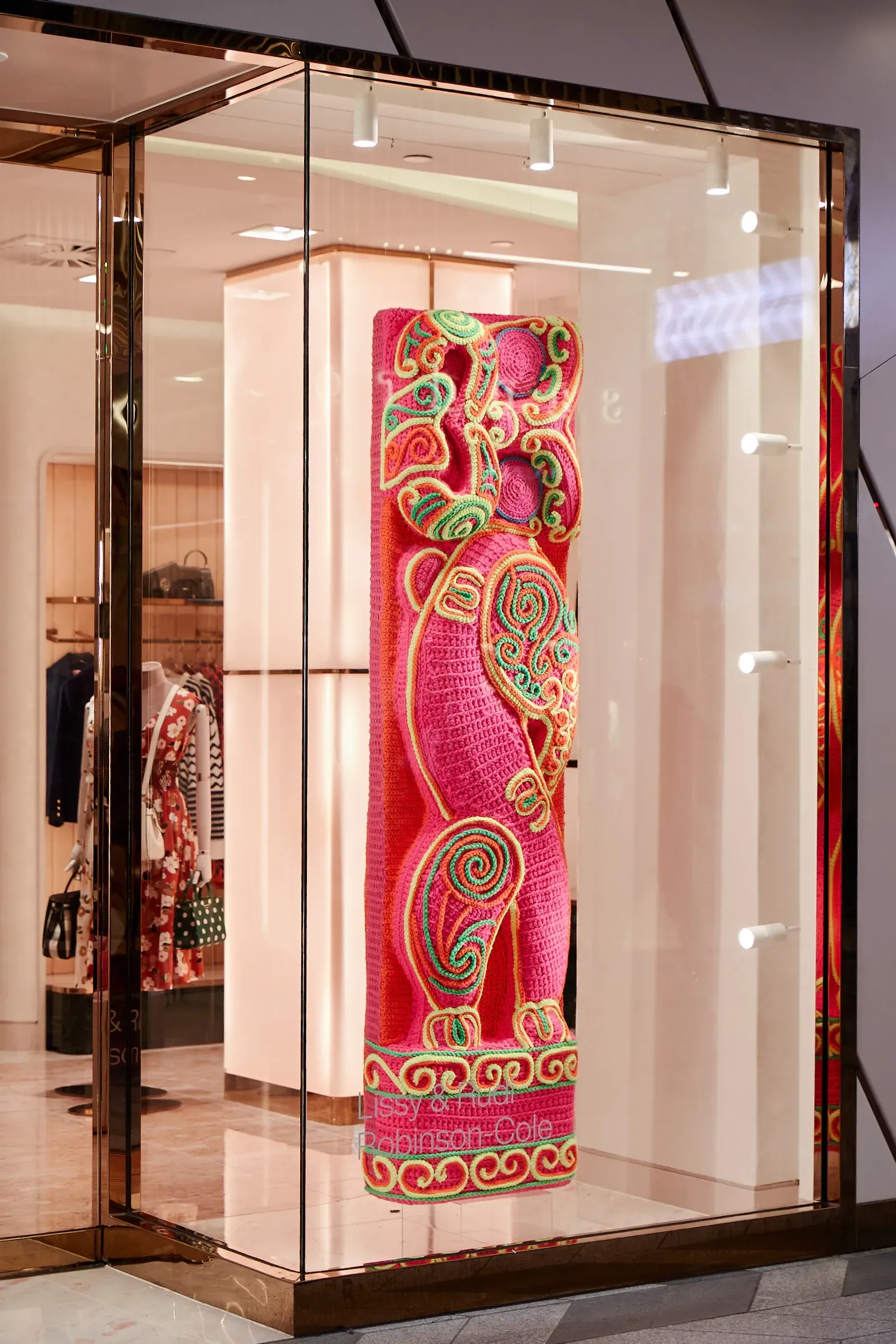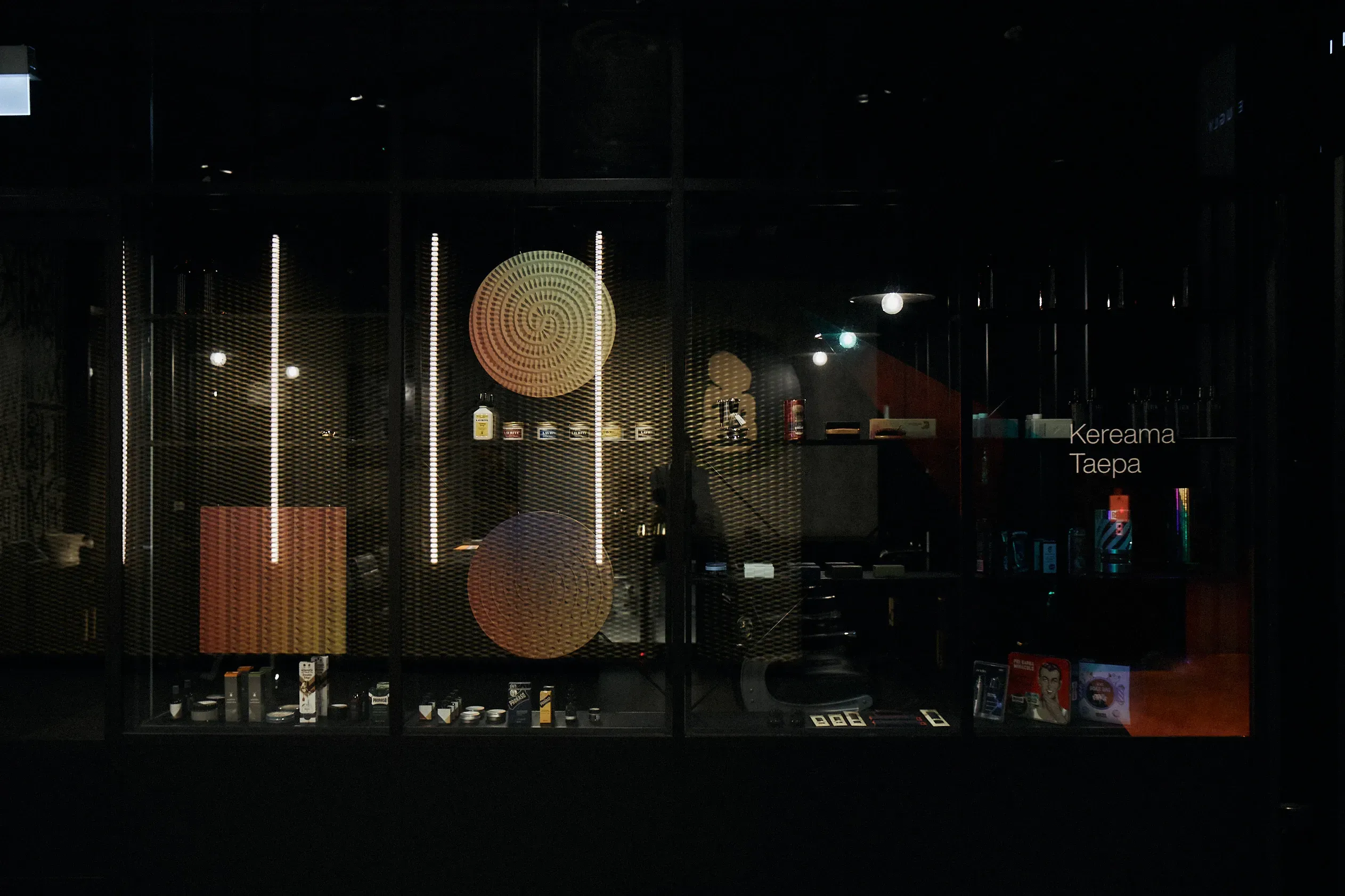Modern Take on Matariki
Written by
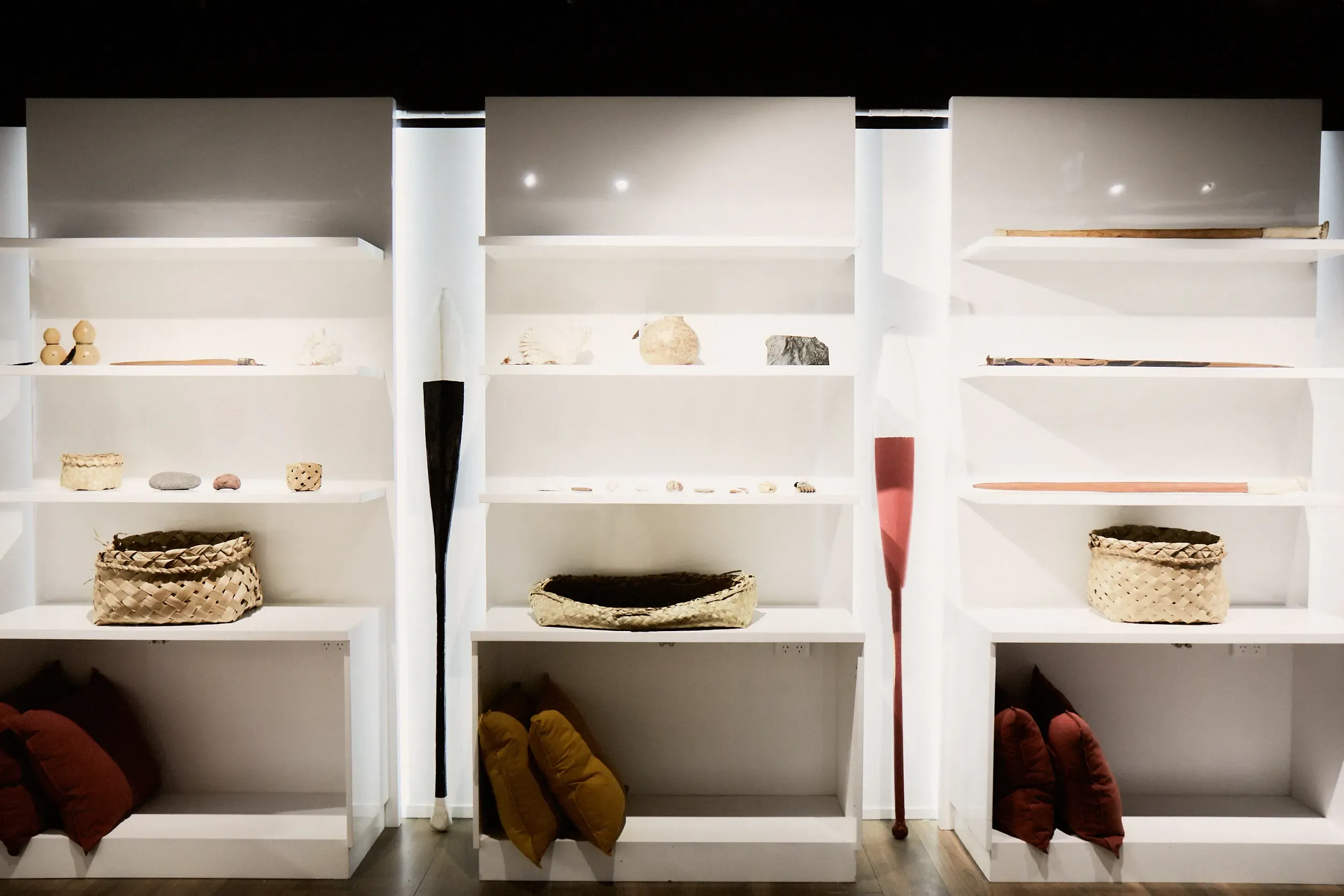
The reappearance of the Matariki stars on our Southern Hemisphere skies marks the start of the Māori New Year.
The rise of a star cluster also known as Pleiades, usually takes place near the end of June and the beginning of July, where we come together to feed the stars with our collective gratitude. It is a time of reflection, relaxation over storytelling.
2022 will mark Matariki as a publicly observed holiday, and our first public holiday that recognises Te Ao Māori. Not so long ago, it was absent from our calendars, and absence is the opposite of saturation.
One of the lessons of Matariki is that we don’t have to overcome nature. By framing care as the main motivator, a new year is a time of reflection that invites a different kind of behaviour.
What would happen if we chose to make cooperation the key to our success, and the core of human survival? Imagine a different future outside the current systems where we deploy the regenerative culture of restoration that sustains life.
A future where we are not locked into a horrible trend of ecological destruction, social and climate injustice.
Just imagine a different social system that gives us a desirable future.
Collaborative reimagining
Curated by visual artist Jade Townsend (Ngāti Kahungunu, Te Ātihaunui-a-Pāpārangi) Whānau Mārama is an exhibition accompanied by a custom-made guidebook of the three floors of activations while simultaneously making the best of relationship and context, Matariki and Commercial Bay - Auckland's newest shopping, hospitality and commercial precinct.
By embracing the retail stores at Commercial Bay as kaitiaki of artists and their taonga housed within, the visitors are guided through the nine sculptural whetū of Matariki. It is a collaboration where mixing business with kingship and stewardship, is making people feel welcome and seen through community making.
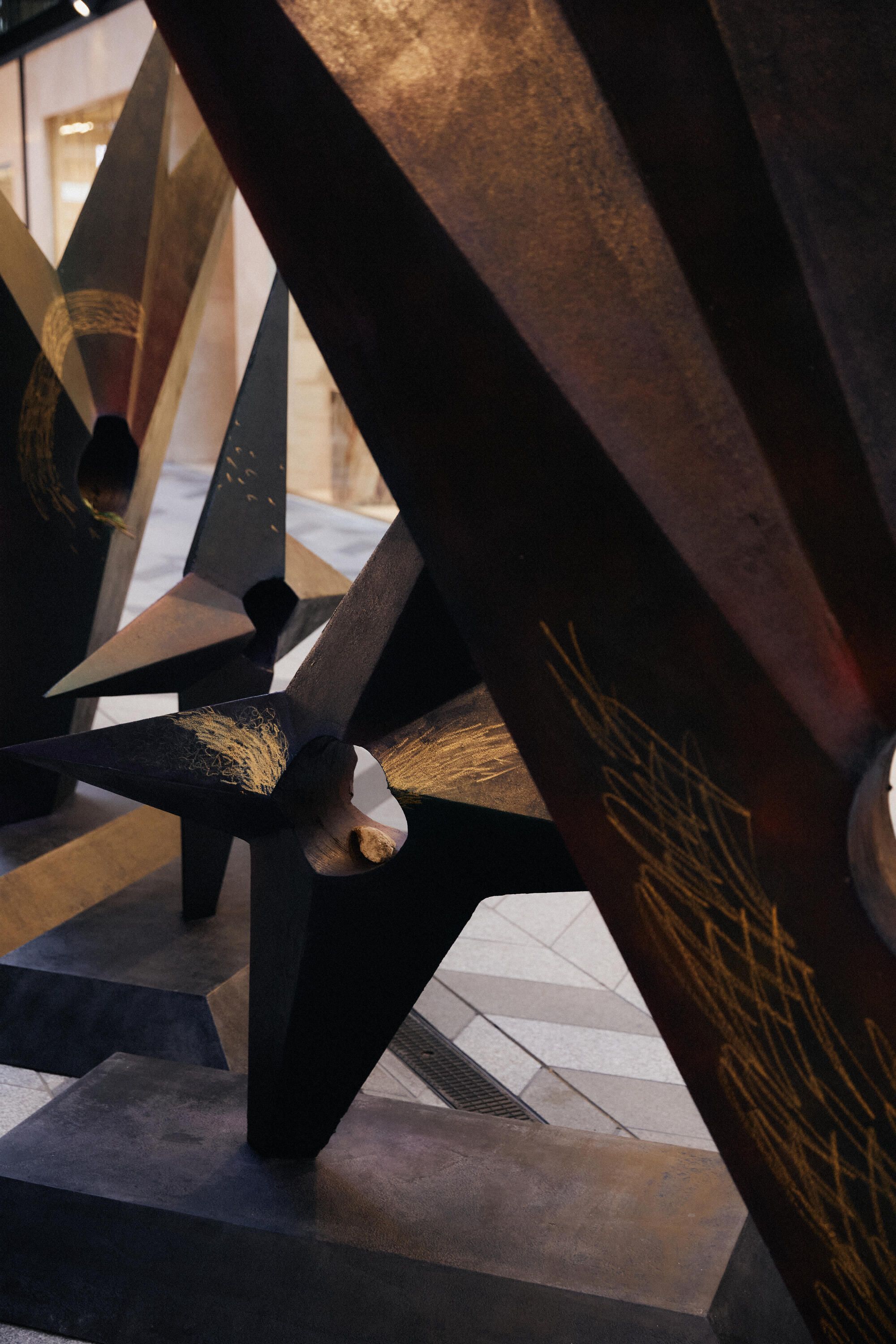
Photo: Holly Burgess.
Running until 11 June, participating Māori artists and researchers include: Jade Townsend, Tyrone Ohia, Riki Gooch, Graham Tipene, Inspiration Group (Rongomaiwahine), Lissy and Rudi Robinson-Cole, Nikau Hindin, Hana Pera Aoake, Emily Karaka, Angela Morton Room, Arielle Walker, Emily Parr, Maia Robin McDonald, Arapeta (mononymous), Sam Bailey, Guardian Maia, Lazy Sneakers, Moana Fresh, and Kereama Taepa.
Townsend explains “Whānau Mārama is entirely Māori featuring a stable of Māori researchers and makers who foster hope, community and knowledge exchange through their self-organised initiatives. Whānau Mārama also translates to ‘family of light’ – during Matariki, as we observe the night sky, we learn in the dark, looking at the stars as our ancestors did.
“Whānau Mārama encourages everyone to come and learn this rich kaupapa at a very special time in the Māori lunar calendar, Maramataka.”
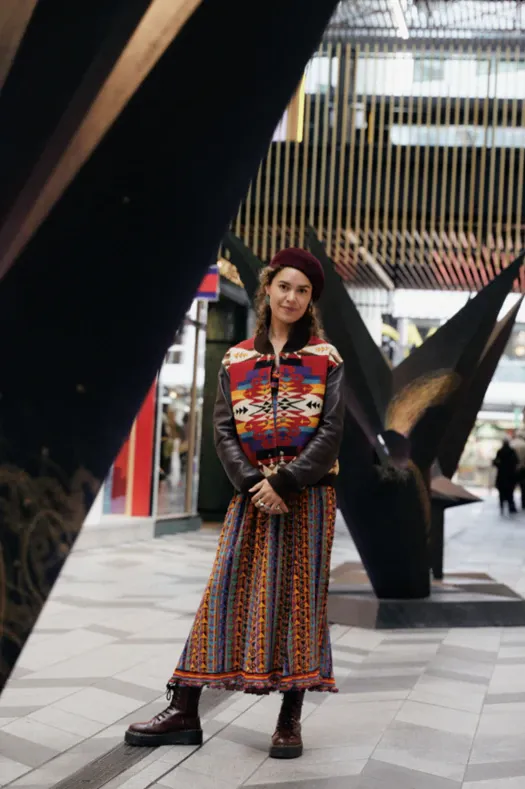
Jade Townsend. Photo: Holly Burgess.
Convergence of culture
I witnessed the power of Whānau Mārama as an open and honest conversation brought upon by our deep reflection about ourselves, our relationships with others, and how we want to live. Commercial Bay creates a space for a turn, a change, a reconsideration of how we experience the shopping district and what else can be present as part of that experience.
Our times necessitate artistic imagination to counteract the narrative colonialism imposes. In the time where general discouraging belief tells us that another world and knowledge is not possible, change must be structural and systemic.
This hybrid exhibition - situated among the commercial spaces and shop windows - is a discussion on the kind of boundaries we place between life and art and an example where convergence of art, culture and public sphere are possible.
When we build new places, we like to see their cultural flex and explore collectively what kind of future we want to experience within and as part of them.
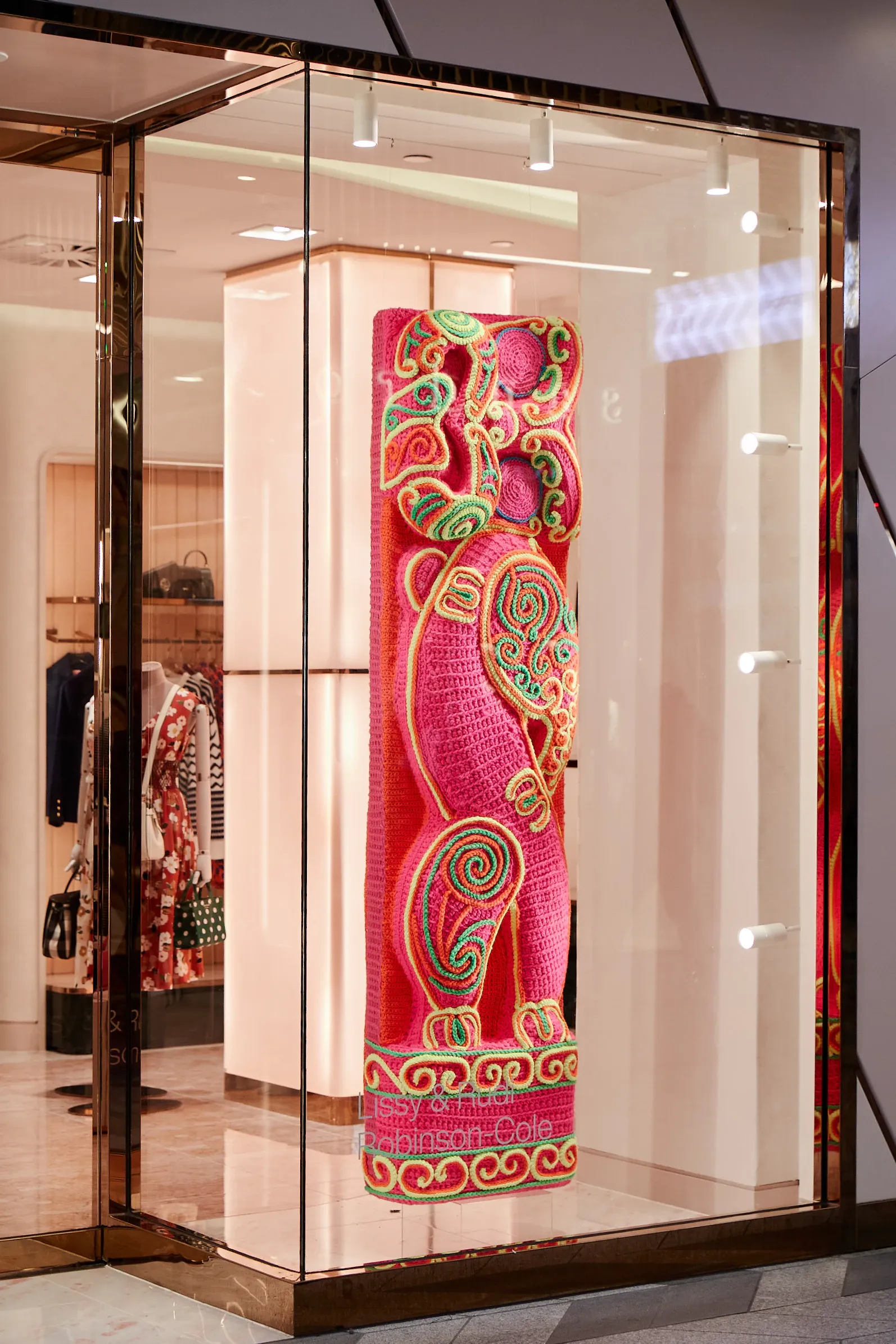
Photo: Holly Burgess.
By placing the exhibition among the window shops, the exhibition evokes the experience in museums or gallery spaces while encouraging experiments through new artistic and curatorial practices. The barrier of glass frames this art as exceptional and multiplies the value of objects presented by making the object displayed inaccessible to touch. That is the power of window shopping as the experience places commodities as objects of our desire, polished, perfect and detached from their everyday function.
This installation alteration of the familiar architectural shopping district, changes the real perception of the building, by inviting and providing deeper insight to this public space by integrating exhibition windows and wānanga space to learn about Tā Moko, and a library display of Māori pukapuka (books) under one roof.
“Commercial Bay is a very special site, and has significant Māori ties in its geography, history, and in its design. Māori culture is inherent in our business model and we strived to develop our first Matariki programme with a Te Ao Māori approach,” says Scott Pritchard, CEO, Precinct Properties.
“Working alongside important young Māori creatives such as Jade Townsend and Tyrone Ohia - and providing a platform for our visitors to learn about Matariki from different Māori perspectives is crucial to our city’s learning of indigenous ways.”
Making Matariki magic
I saw and felt the reciprocal relationships between the artworks, the intention of bringing it into the heart of our city and its commercial heartbeat, between knowing and feeling, self and other, artists and visitors.
It is such a pleasure to experience collaborative witnessing and share in narrative and storytelling by contributing to the world in which we live. It allows the institution to grow by being situated in community and as a necessary way into storying living.
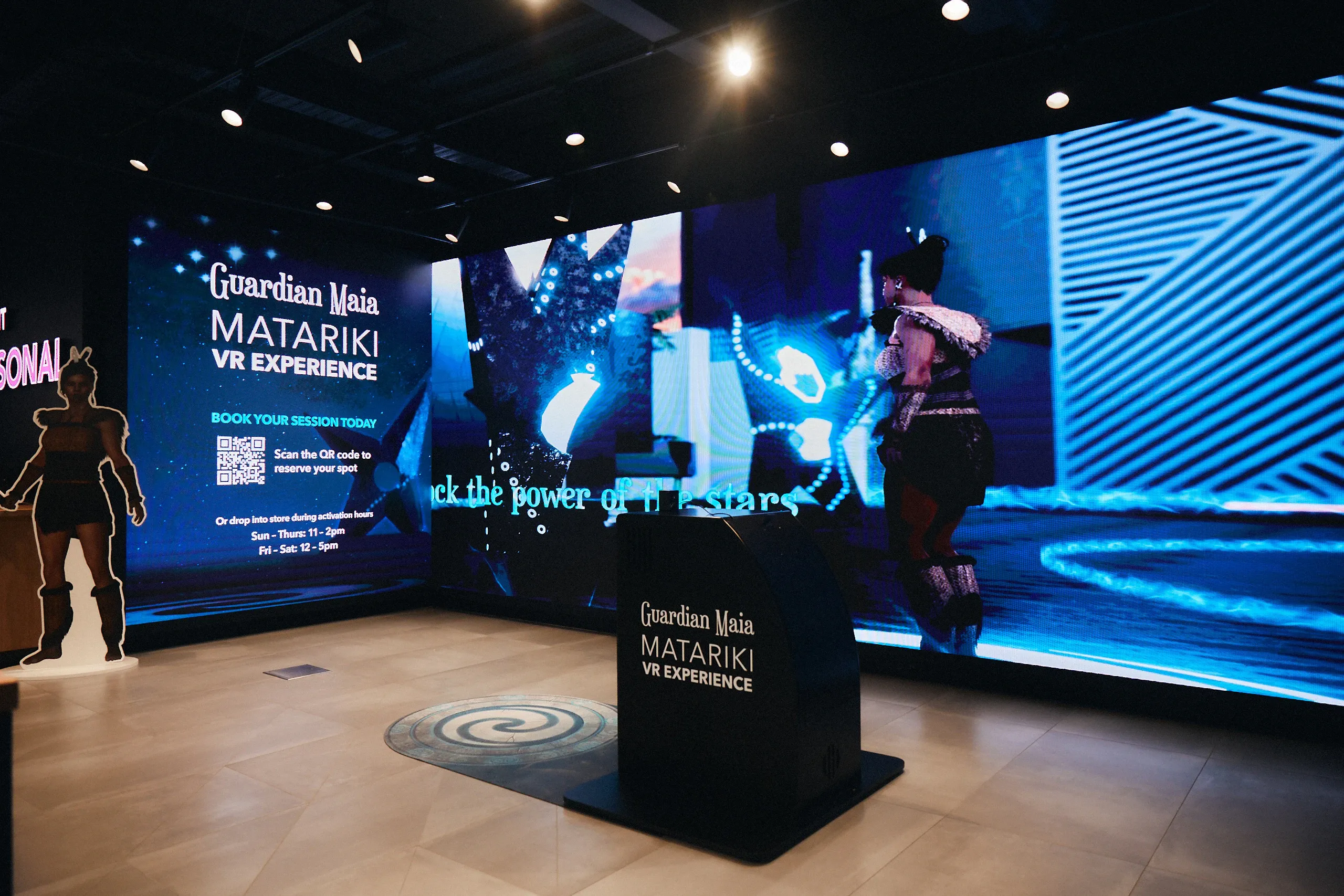
Photo: Holly Burgess.
It’s art in the eyes of those that will benefit from its existence and most importantly through collective artmaking. The benefit is born out of cooperative structures and acknowledging economies and the larger ecosystem that art is created in.
By treating the experience and individuals with responsibility and care, the work can compel all who do, see, and listen to this exhibition to make room for difference, complexity, and change. Whānau Mārama allows us to storm through the barriers by taking micro bites to chew into the macro problem.
In the works presented, the artists are not using their form of artistic practice solely to describe or to facilitate understanding of Matariki as a cultural experience of or to reclaim spaces rarely offered to them in the first place. Instead, they use art to promote social change by compelling visitors to think about taken-for-granted commercial experiences in astonishing, unique, and often problematic ways and, further, to take new and different action in the world based on the insights generated by this act of reclamation.
Such practices engage with relational and collaborative endeavours, mark and allow the visibility of different ways of knowing, through exploring of possibilities, utopias, and futures. A desire to keep this very conversation going. One that accommodates the diverse goals of understanding and interpretation, leading to transformation.
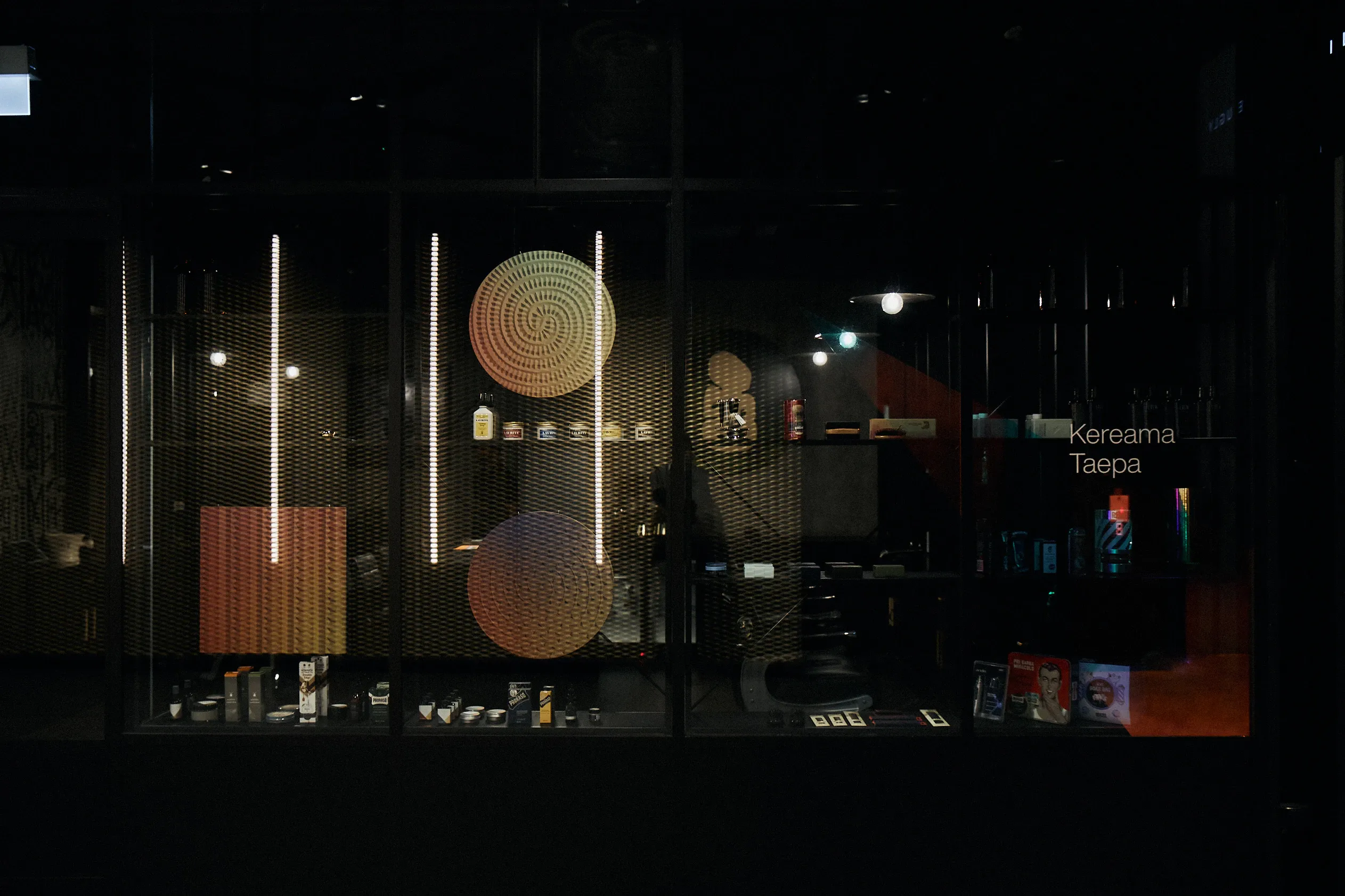
Photo: Holly Burgess.
